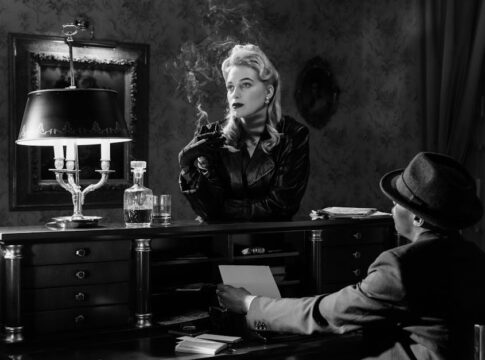⏱️ 5 min read
Cinema has always pushed boundaries, from revolutionary special effects to groundbreaking storytelling techniques. But one aspect of filmmaking that rarely gets attention is duration. While most feature films clock in at around 90 to 120 minutes, some filmmakers have tested the limits of human endurance by creating extraordinarily lengthy works. The record for the longest movie ever made stands at a staggering 85 hours, challenging our very definition of what constitutes a film.
The Record-Breaking Film: “The Cure for Insomnia”
Released in 1987, “The Cure for Insomnia” holds the Guinness World Record as the longest movie ever made, with a runtime of 5,220 minutes—exactly 87 hours. Directed by John Henry Timmis IV, this experimental film premiered in its entirety at the School of the Art Institute of Chicago from January 31 to February 3, 1987. The screening required viewers to commit to a marathon viewing experience that spanned multiple days.
The film primarily consists of artist L.D. Groban reciting his 4,080-page poem of the same name. This poetry reading is interspersed with occasional heavy metal music performances and X-rated clips, creating an avant-garde experience that defies conventional filmmaking norms. The project was designed as an endurance test for both the performer and the audience, questioning the nature of cinema and viewer engagement.
Other Contenders for Extreme Film Length
While “The Cure for Insomnia” technically holds the record at 87 hours (though commonly cited as 85 hours), several other films have challenged the boundaries of runtime:
- Modern Times Forever: This 2011 experimental film by Danish artists runs for 240 hours (10 days) and depicts the gradual decay of the Stora Enso building in Helsinki over thousands of years through time-lapse projections.
- Cinématon: French filmmaker Gérard Courant’s ongoing project began in 1978 and has accumulated over 200 hours of footage, featuring silent portraits of various individuals, each lasting approximately 3.5 minutes.
- Matrjoschka: This 2006 film by German artist Karin Hoerler runs for 95 hours and consists of nested narratives that explore themes of time and repetition.
- The Longest Most Meaningless Movie in the World: A 1970 British film running 48 hours, featuring scenes of various subjects with minimal action or dialogue.
The Artistic Motivation Behind Ultra-Long Films
Filmmakers who create these extraordinarily lengthy works aren’t simply trying to break records for the sake of notoriety. These experimental projects often serve deeper artistic purposes and challenge fundamental assumptions about cinema and audience engagement.
Ultra-long films force viewers to experience time differently. In conventional cinema, audiences are transported through carefully edited narratives that compress or expand time as needed. However, films that run for dozens of hours create a more contemplative, almost meditative experience. They strip away the traditional entertainment value and instead focus on endurance, patience, and altered perception.
These works also question the commercial nature of mainstream cinema. By creating films that cannot be easily consumed or distributed through traditional channels, artists reject the commodification of art and instead create experiences that exist outside conventional market structures.
The Practical Challenges of Screening Extended Films
Presenting ultra-long films poses significant logistical challenges. Exhibition spaces must remain open continuously for days or even weeks. Technical equipment must run without interruption, requiring redundant systems and careful monitoring. Venues must provide facilities for audiences who may want to leave and return, including systems to track viewing progress.
For “The Cure for Insomnia,” the School of the Art Institute of Chicago created a dedicated screening environment where viewers could come and go as needed. Very few people, if any, watched the entire film from start to finish in a single sitting. This raises interesting questions about what it means to “watch” a film and whether continuous viewing is necessary for the experience to be valid.
The Digital Age and New Possibilities for Extended Cinema
The rise of digital filmmaking and streaming technology has opened new possibilities for ultra-long films. Without the physical limitations of film reels and the high costs of film stock, artists can now create extended works more feasibly. Digital projection also eliminates issues like reel changes that would interrupt traditional film screenings.
However, the digital age has also made these works more conceptual. Many ultra-long films now exist primarily as artistic statements rather than works meant to be viewed in their entirety. They serve as challenges to our fast-paced, content-hungry culture, where viewers typically consume media in short, easily digestible segments.
The Impact on Cinema and Art
While ultra-long films remain firmly in the realm of experimental and avant-garde cinema, they have influenced broader discussions about duration, attention span, and the nature of cinematic experience. These works have inspired other artists to experiment with unconventional runtimes and have contributed to ongoing debates about what defines a film.
Contemporary slow cinema movements, championed by directors like Béla Tarr and Lav Diaz, incorporate elements of extended duration into more accessible formats. These filmmakers create works that run several hours but still maintain narrative structures, finding a middle ground between experimental endurance tests and conventional cinema.
The Future of Extended Runtime Cinema
As technology continues to evolve and artists push creative boundaries, the concept of film duration will likely continue to be explored and challenged. Virtual reality and interactive media may create new contexts for extended cinematic experiences, where viewers can engage with lengthy works in non-linear ways.
Whether these ultra-long films will ever find broader audiences remains uncertain, but their existence ensures that cinema remains a space for experimentation and artistic expression beyond commercial constraints. They remind us that film can be more than entertainment—it can be endurance art, philosophical inquiry, and a profound meditation on time itself.

